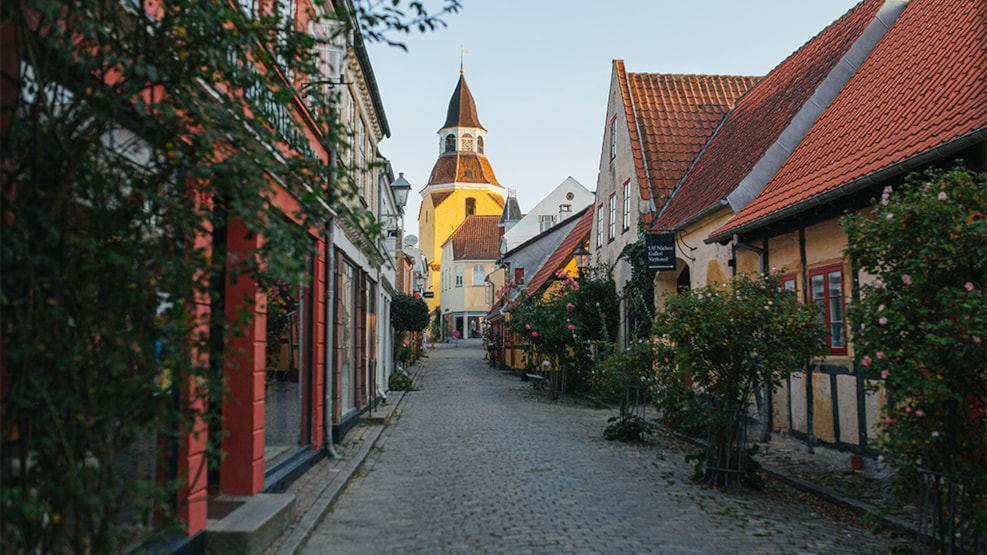
Geopark: Faaborg købstad
Faaborg is a well preserved old town, first mentioned in the sources in 1229.
Most of the houses are from the 18., 19. and early 20. century, but one of the medieval gates, Vesterport, is still to be seen. The bell-tower belonged to the medieval church, which was demolished. Instead the church in the monastery, which had no bell tower, was put to service as city church.
The harbor has deep water and is well protected against the wind coming mostly from the southwest. Shipbuilding and shipping from early days characterized the town and the harbor is still busy with both trade and recreational activity. One of the old merchant buildings next to the harbour is Den gamle Gaard. It has a little pavilion, where the merchant and his family could overlook the harbour and his own ships. Faaborg was the first town in the archipelago having ships trading as far away as China. Poul Kinafarers Gård is an old warehouse in Faaborg.
Like Rudkøbing and Ærøskøbing, Faaborg was for long a small town with a population in the 17th and 18th centuries just about 1,000 inhabitants. Due to commerce and a wide range of industries the town prospered in the 19th century and the population grew to 4,218 in 1901.
In the last century Faaborg became the town of a school of young painters picking nature, landscape and life on Fyn as motif. In 1915 a neoclassical building for their paintings was opened and named Faaborg Museum. This building and the interior as well as the paintings is a cornerstone in Danish art history.